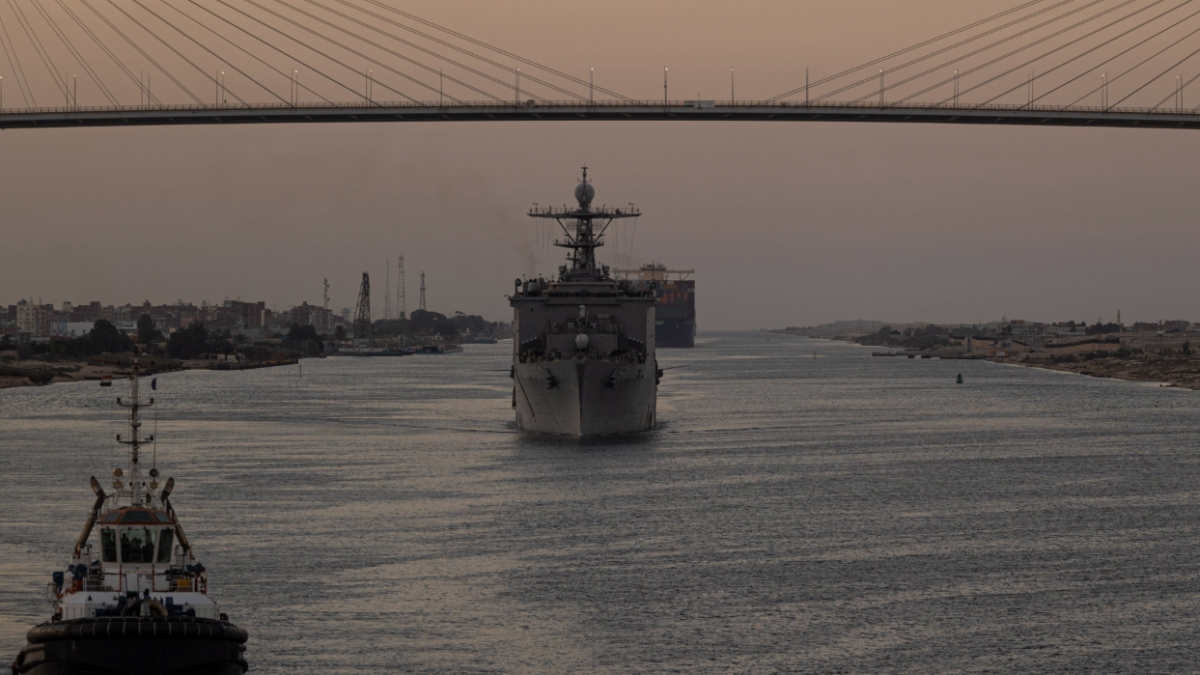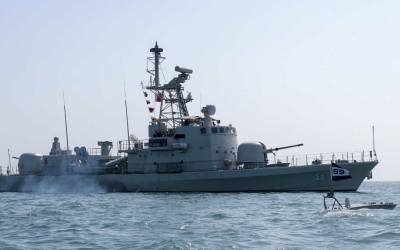Thousands of US sailors, marines reach Red Sea amid Iran tensions

More than 3,000 United States military personnel have arrived in the Red Sea aboard two warships, after Washington said it would boost its military footprint in the region amid rising tensions with Iran.
The arrival of additional troops comes after the US said it was weighing an unprecedented step to deploy combat personnel on commercial vessels in the Persian Gulf after Iran’s seizure of tankers in the area.
On Monday, Tehran accused the US of inflaming regional instability.
"The US government's military presence in the region has never created security. Their interests in this region have always compelled them to fuel instability and insecurity," Nasser Kanani, Iran's foreign ministry spokesman, said.
Talks between Iran and the US to revive the 2015 nuclear deal have stalled. Meanwhile, Iran has stepped up its seizure of tankers in the region - a common practice when tensions with the US escalate.
In April, Iranian naval commandos seized an oil tanker carrying oil from Kuwait to Houston, Texas, for US energy giant Chevron.
A second tanker, Panama-flagged tanker Niovi, was sailing around the coast of the UAE, from Dubai towards Fujairah, when it was stopped by the Islamic Revolutionary Guard Corps (IRGC) on 3 May.
In July, the US said it had successfully prevented two attempted commercial tanker seizures by the Iranian navy which opened fire on the vessels near the Strait of Hormuz, the vital sea passage between the Gulf and the open ocean through which around 20 percent of the world's oil, and around 25 percent of the world's liquified natural gas, pass through.
On Monday, the US Fifth Fleet said in a statement that additional troops had arrived in the region on board the USS Bataan and USS Carter Hall warships, providing "greater flexibility and maritime capability" for US forces.
Iranian inroads
USS Bataan is an amphibious assault ship that can carry fixed-wing and rotary aircraft as well as landing craft. The USS Carter Hall, a dock landing ship, transports marines and their gear and lands them ashore.
The spokesman for Iran's Revolutionary Guards, Ramazan Sharif, downplayed the US show of force, saying the Islamic Republic "has reached a level of strength and power that can reciprocate any vicious act by the US, such as seizing ships", according to state news agency IRNA.
The US has come under pressure from its Arab partners to beef up its security umbrella in the strategic region. In May, the UAE said it was exiting a US-led multinational security force that protects shipping in the Gulf, after reports that Abu Dhabi felt slighted by Washington’s response to Iranian tanner seizures.
In an affront to their allies in Washington, the UAE, along with Saudi Arabia and Oman, said they would join a Chinese-led naval alliance that includes Iran to police the Gulf.
“It defies reason that Iran, the number one cause of regional instability, claims it wants to form a naval security alliance to protect the very waters it threatens,” Commander Tim Hawkins, the spokesman for the US 5th Fleet and Combined Maritime Forces, told Breaking Defense in response to the move.
The UAE and Saudi Arabia view Iran as a major foe, but analysts say they have been hedging their bets against concerns about US disengagement from the region by reaching out to the Islamic Republic.
Last week, Tehran extended an offer to the president of the United Arab Emirates and Kuwait's foreign minister to visit the Islamic Republic.
Middle East Eye propose une couverture et une analyse indépendantes et incomparables du Moyen-Orient, de l’Afrique du Nord et d’autres régions du monde. Pour en savoir plus sur la reprise de ce contenu et les frais qui s’appliquent, veuillez remplir ce formulaire [en anglais]. Pour en savoir plus sur MEE, cliquez ici [en anglais].





